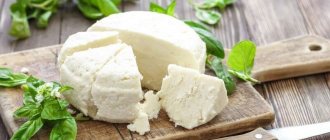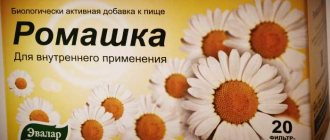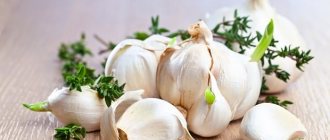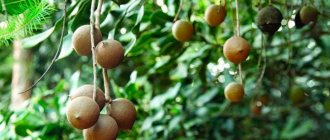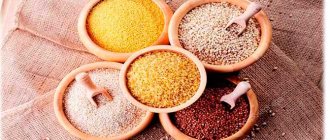In Japan, it is customary to give friends “kudzu-nuko” for the New Year - a symbolic gift in the form of a small jar of herring caviar. It is believed that a person’s wealth will depend on the number of eggs on a sandwich made with the participation of the donated delicacy.
Photo: Depositphotos.com. Author: asimojet.
But for a Russian person, herring caviar does not cause awe. Partly because we are used to beluga or chum salmon caviar. Plus, herring is too familiar, prosaic food for us. And for many housewives, its caviar is sent immediately after cutting the fish, if not to the cat in a bowl, then to the trash bin.
From the history
Indeed, for many centuries, herring was considered the food of the poor due to its bitter taste. And only in the 14th century, thanks to a simple Dutch fisherman Willem Jacob Bakels, this fish, salted in barrels immediately after catching, conquered first Europe and later Russia with its excellent taste.
Then it was the turn of the caviar. There were so many herring in the ocean waters that when the time came for spawning, the coastal strip was cloudy with milk, and all the algae were covered with a layer of caviar.
Unlike Europeans and Russians, Asian peoples fell in love with such caviar (in combination with kelp), preparing tons of it.
How to pickle at home: recipe
Salted or lightly salted herring caviar is a complete and independent food product. As a rule, it is served separately; if desired, it can be supplemented with some side dish and seasonal vegetables.
Sandwiches with herring caviar are attractive both in appearance and taste, moreover, they are not tied to a celebration and, if desired, can be served daily.
To try this product, you can purchase or order it in a store, restaurant, cafe in ready-made form, or pickle it at home in domestic conditions.
Did you know? Until the 15th century in Europe, herring, due to its heavy aroma of rancid fish oil and unpleasant bitter taste, was not considered a food intended for people of high society.
It was the food of poor residents and monks, and the French king Louis the Saint sent it as alms to outcasts. The gastronomic herring revolution began after the Dutch fisherman Willem Jacob Beukelzon experimented in preparing the fish: he removed the gills, the main component of the product that gives off such a taste and smell, and salted it. The list of ingredients required to prepare salted caviar at home is as follows:
- caviar from 4–6 fish;
- salt pepper;
- Bay leaf.
Algorithm of actions:
- Place 4 bay leaves on the bottom of a half-liter jar so as to cover the bottom.
- Carefully place the caviar on top in one layer, sprinkle with pepper and salt to taste.
- Again we put in a bay leaf (you can use 1-2 leaves instead of 4).
- Place another layer of caviar on top of the bay leaf, which we also pepper and salt.
- We place the caviar so that the pieces do not overlap each other, but in one layer. If the pieces are large, they can be cut in half.
- We also place bay leaves on the last layer of the product, pepper and salt.
- Close the jar tightly and put it in the refrigerator for about a week. As it is salted, you can see how the contents of the jar are compressed and settle.
Important! A unique delicacy in the form of herring caviar, unlike expensive black or red caviar, is more affordable, but no less healthy.
Of course, herring is one of the most common fish found in the daily menu of modern society. All of the above information only proves the benefits of herring caviar for the body. For all its simplicity, easy availability and budget, herring caviar has excellent nutritional qualities and rightfully occupies an important place in the cuisines of different countries, because herring dishes, including caviar, can diversify both everyday and formal lunch or dinner.
How to pickle herring caviar at home: video
Composition and calorie content
The composition and calorie content of caviar depends on the habitat and production of fish. The fattest one was caught at the end of summer: it had time to put on fat.
Northern herring from subpolar latitudes and its caviar are valued on the market due to their high fat content (up to 33%) compared to Pacific herring (about 12%).
Calorie content and nutritional value of different types of caviar
| Type of caviar | Proteins, g | Fats, g | Carbohydrates, g | Calorie content, kcal |
| grainy beluga | 27,2 | 14,2 | 0 | 237 |
| Grainy pink salmon | 31,2 | 11,7 | 0 | 230 |
| Granular chum salmon | 31,6 | 13,8 | 0 | 251 |
| Grainy salmon | 32 | 15 | 0 | 245 |
| Grainy sevruga | 28,4 | 11,9 | 0 | 221 |
| Pressed sturgeon | 36 | 10,2 | 0 | 236 |
| Salted herring | 31,6 | 10,3 | 0 | 222 |
| Fresh herring | 16,3 | 10,7 | 0 | 161 |
As can be seen from the table, herring caviar has the lowest calorie content, which is why it should attract seafood lovers who are watching their figure and trying to keep their diet within dietary limits.
Nutritional table
| Compound | Quantity | Norm | Properties | Consequences of shortage |
| Proteins and fats: sources of energy, have a positive effect on skin condition. | ||||
| Squirrels | 31.6 g | 76 g | Stimulates the functioning of the nervous system, kidneys, and liver. Increases immunity, accelerates the speed of chemical reactions. | Growth and development in children slows down. Memory and the functioning of the endocrine glands, liver, kidneys, brain, cardiac and respiratory systems deteriorate. Immunity weakens. |
| Fats | 10.3 g | 60 g | Helps absorb vitamins and microelements. Positively affect the activity of brain cells. | Irritability, bad mood, constant feeling of hunger, fatigue, poor concentration. Joint pain, vision problems, skin problems. |
| Vitamins | ||||
| A | 90 mcg | 900 mcg | Strengthens the immune system, improves metabolism, slows down aging. | Hypovitaminosis, decreased resistance to viral infections |
| B1 | 0.24 mg | 1.5 mg | It is part of enzymes that provide the body with energy and affects the level of metabolism. | Dysfunction of the nervous, digestive, and cardiovascular systems. |
| B2 | 2.1 mg | 1.8 mg | Participates in redox reactions. | The condition of the skin and mucous membranes worsens, and light vision is impaired. |
| B4 | 13.7 mg | 500 mg | Lowers cholesterol in the blood, affects the condition of the nervous, blood, and digestive systems. | Insomnia, neuroses, fatigue, headaches, arrhythmia. |
| B5 | 0.2 mg | 5 mg | Participates in the metabolism of BZHU, forms antibodies. | Diseases of the small intestine, depression, fatigue, headaches. |
| B6 | 0.1 mg | 2 mg | Stabilizes nervous and muscle activity. Improves skin condition. | Irritability, loss of mood and strength, drowsiness or, conversely, insomnia. Formation of kidney stones, hair loss, dry skin. |
| B9 | 15.7 mcg | 400 mcg | Promotes the construction of new cells. | Poor memory, aggressiveness, irritability, early gray hair, hair loss. Infertility, decreased activity. |
| B12 | 0.2 mcg | 3 mcg | Stimulator of red blood cell formation and DNA structure. Renewal of the epidermis and gastric mucosa. | Fatigue, irritability, nervousness, pallor and yellowness of the skin, intestinal upset. |
| C | 0.6 mg | 90 mg | Antioxidant, accelerator of growth of new cells and tissues. | Weakening of cardiac activity, immunity, eye disease, scurvy, shortness of breath, increased fatigue. |
| D | 12.1 mcg | 10 mcg | Forms the skeleton, teeth and bone tissue, stabilizes blood glucose levels. | Dental diseases, rickets, insomnia, decreased activity, weight loss, blurred vision. |
| E | 7 mg | 15 mg | Antioxidant, participates in the functioning of the gonads, heart muscle, protects cell membranes from oxidative stress. | Neurological disorders. |
| H | 0.9 mcg | 50 mcg | Participates in the activity of the thyroid gland, normalizes blood sugar. | Mental disorders, growth retardation in children, anemia, muscle pain, weakness. |
| PP | 1.8 mg | 20 mg | Digestion of vegetable protein, improvement of the condition of the skin and mucous membranes. | Dizziness, headaches, constipation, sleep problems, decreased immunity. |
| Macronutrients | ||||
| Potassium | 197 mg | 2500 mg | Improves brain function and promotes oxygen saturation. | Weakness, swelling, decreased activity. Constipation, heart attacks, hair loss, intestinal upset, infertility. |
| Calcium | 19 mg | 1000 mg | Affects blood clotting, ensures the growth and strength of nails and hair. | General and muscle fatigue, sleep disturbances, deterioration in concentration, depression, arrhythmia, hypertension. |
| Silicon | 0.5 mg | 30 mg | Helps absorb vitamins, calcium, supports the immune system. | Increased risk of developing diabetes, oncology, cardiovascular diseases, hypertension. |
| Magnesium | 24.5 mg | 400 mg | Responsible for the development and growth of bones, normalization of blood sugar levels. | Metabolic failures, constant state of tension and anxiety, impaired insulin production. |
| Sodium | 61 mg | 1300 mg | Maintaining acid-base balance, activating enzymes of the pancreas and salivary glands. | Decreased appetite, memory loss, skin rashes. |
| Phosphorus | 808 mg | 800 mg | Regulates the acid-base balance and is necessary for the mineralization of bones and teeth. | Anorexia, anemia, rickets. |
| Chlorine | 194.7 mg | 2300 mg | Regulates water and acid-base balance. | Drowsiness, decreased activity. |
| Microelements | ||||
| Iron | 2.7 mg | 18 mg | Ensures the occurrence of redox reactions. | Anemia, increased fatigue, gastritis. |
| Iodine | 1 mcg | 150 mcg | Stabilizes hormonal levels. | Lethargy, drowsiness, apathy. Hypotension, excess weight, swelling, weakened immune system. |
| Cobalt | 2.4 mcg | 10 mcg | Activates fatty acid metabolism enzymes. | Increased fatigue, anemia, memory impairment. |
| Manganese | 0.145 mcg | 2 mcg | Promotes the absorption of vitamins B, C, E. Improves brain function. Promotes the formation of new cells. | Immunity disorders, osteoporosis, infertility. |
| Copper | 80.3 mcg | 1000 mcg | Increases immunity, normalizes the functioning of the digestive system. | Hair loss, pale unhealthy skin. Depression, irritability. |
| Molybdenum | 8.6 mcg | 70 mcg | Provides amino acid metabolism. | Skin sagging, hair loss, swelling. |
| Selenium | 40.3 mcg | 55 mcg | An element of the body's antioxidant defense. | Osteoarthrosis of the spine and limbs, myocardiopathy. |
| Fluorine | 170 mcg | 4000 mcg | Participates in the metabolism of minerals, strengthens bone structures and tooth enamel. | Caries, brittle nails and hair, osteoporosis. |
| Chromium | 194.7 mcg | 50 mcg | Regulates blood glucose levels. | Excessive weight, causeless fatigue, increased anxiety, male fertility, pre-diabetic conditions. |
| Zinc | 0.55 mg | 12 mg | Stimulates cell renewal, increases the body's defenses. | Memory loss, hair thinning, erosion, loss of appetite. |
| Fatty acid | ||||
| Omega-3 | 2.4 g | 0.9–3.7 g | Perform structural and energetic functions. | Brittle nails, hair loss, dandruff, thirst. |
| Omega-6 | 0.2 g | 4.7–16.8 g | Regulates the metabolism of proteins, lipids, sugars, and B vitamins. | Weakness, memory loss, increased weight. |
| Saturated | 1.5 g | up to 18.7 g | Source of energy, testosterone production. | Disruption of the hormonal and nervous systems. |
| -mono | 1.66 g | 18.8–48.8 g | Activate metabolic processes in the body. | Weakness, increased cholesterol in the blood. |
| -poly | 2.66 g | 11.2–20.6 g | Necessary for connective tissues. | Depression, hair loss, weakness, blurred vision. |
| Energy value | 222 kcal | |||
* Please note: all data is based on 100 g of product.
Tangerines: benefits and harms of the fruit
This fruit belongs to the category of citrus fruits. There are tangerines on almost every New Year's table. The benefits and harms of a fruit depend on the quality and quantity of fruit consumed.
Of course, since childhood, everyone is accustomed to celebrating the New Year with the smell of a Christmas tree and tangerines. This has become a tradition for Russian people. And in everyday life we often use this sweet and healthy fruit. Children especially love it, as it is easy to peel and is not so sour compared to other representatives of citrus crops (orange, lemon, grapefruit, etc.). Also very often, the pulp of the fruit is used to prepare various confectionery dishes. These are juices, cocktails, pies, sweet desserts, ice cream and others. This is due to the affordability and high quality characteristics of the product.
A large amount of ascorbic acid, which tangerines are rich in, is undoubtedly beneficial. And harm from this property can only be caused if the quantity is abused, since there is an excess of vitamin C in the body. In addition, tangerines contain various biologically active substances: magnesium, potassium, calcium, vitamin A, vitamin B, vitamin P and others .
It should be noted that tangerines are beneficial and harmful to the human body. But not only the pulp of the fruit, but also the peel has unique properties. For example, the benefits of tangerine peels help in the treatment of various diseases. The most common recipe using the rind is to grind the dried rind and add it to any dish. Effectively helps in the treatment of flatulence and dysbacteriosis. For diseases of the upper respiratory tract, brew 1 tablespoon of tangerine powder in 1 glass of boiling water and take half a glass 2-3 times daily, about 30-40 minutes before eating.
To normalize the functioning of the nervous system, tea with the addition of tangerine peel or juice is used. Ideal for treating coughs, removing phlegm, improving digestion, and increasing appetite in children.
Many people wonder: what are the benefits of tangerines? Try making an alcohol tincture from the crushed peel. To do this, take 2 teaspoons of crushed peel and pour a glass of vodka or 40% alcohol. The exposure time is at least 1 week, after which strain the tincture and take 20 drops, after dissolving them in half a glass of water. The recipe is used for dry cough that does not respond to drug treatment.
It is also advisable to lubricate the nail plates and the skin around them with fresh tangerine peel if they are infected with a fungus.
Of course, we should note all the qualities that tangerines have. Benefit and harm are relative concepts. For example, the harm lies in the fact that if a person is prone to allergic reactions, a rash and skin irritation may appear. This is especially true for children who are sensitive to allergenic foods. Consume tangerines in moderation.
It is also recommended to exclude from the diet or significantly reduce the consumption of fruit for people with diseases of the gastrointestinal tract (stomach ulcer, duodenal ulcer, increased acidity of gastric juice, gastritis). This is due to the fact that tangerines contain a large amount of citric acid, which has an irritating effect on the walls of the digestive tract.
When consuming the peel, it is necessary to take into account the conditions of the area in which the fruit was grown, since it is often in the peel that harmful nitrates and various chemicals accumulate. Therefore, tangerines are beneficial and harmful in equal proportions; when consuming, take into account the structural features of the body and other external factors that directly affect health
Also pay great attention to the choice of fruit: examine its appearance, the condition and color of the peel, the density of the fruit
KakProsto.ru>
Beneficial features
An analysis of the nutrients in herring caviar shows how healthy it is:
- Stimulates vital processes: participates in hematopoiesis, tissue renewal, energy metabolism, supports the immune system, activates metabolism, triggers regeneration, removes waste and toxins, and prevents the development of cancer cells.
- Beneficial for the cardiovascular system: thins the blood and normalizes blood pressure, increases hemoglobin, reduces the risk of thrombophlebitis and varicose veins, cleanses the bloodstream of atherosclerotic plaques and lowers cholesterol levels in the blood.
- It heals the body due to lecithin, which supplies nutrients and vitamins to all cells and increases the effectiveness of medications.
- It has anti-inflammatory and restorative properties, which is especially important in the postoperative period.
- Normalizes the functioning of the thyroid gland due to the high content of fatty acids and vitamins.
- It has a beneficial effect on the nervous system: activates mental activity, improves mood, increases performance and endurance, relieves depression, the effects of stress, tension, drowsiness, and suspiciousness.
- Used in modern cosmetology (as part of masks and creams): smoothes wrinkles, increases skin elasticity, moisturizes and rejuvenates it, evens out complexion, fights pustules, saturates cells with collagen, elastin and fatty acids, and eases the course of psoriasis.
- Strengthens bones and joints: minimizes the risks of rheumatoid arthritis, increases bone strength.
Due to its relatively low calorie content, herring caviar is promising for dietary and therapeutic nutrition.
Chemical composition of herring
The chemical composition of herring is rich in vitamins and fatty acids, such as omega-3, as well as micro- and macroelements. In addition, an equally diverse set of components is present in milk and caviar, which people completely needlessly neglect. The composition of salted, lightly and lightly salted fish is almost no different from raw fish, so let’s look at a set of vitamins and useful elements using salted Atlantic herring as an example.
Chemical composition of vitamins in fish per 100 g:
| Product | A, mg | B4, mg | B9, mg | C, mg | B12, mg | D, mg | PP, mg |
| Fillet | 0,02 | 65,1 | 0,012 | 0,79 | 5,9 | 31,1 | 4,5 |
| Milk | – | – | – | – | – | 31,1 | – |
| Caviar | 0,09 | 13,6 | 0,016 | 0,61 | 0,002 | 0,012 | 1,7 |
Micro- and macroelements per 100 g:
- iodine – 41.1 mg;
- copper – 0.043 mg;
- iron – 1.2 mg;
- selenium – 35.9 mg;
- cobalt – 39.9 mg;
- fluorine – 379.1 mg;
- potassium – 215.6 mg;
- magnesium – 39.6 mg;
- calcium – 81.1 mg;
- sodium – 101.1 mg;
- phosphorus – 269 mg;
- chlorine – 166.1 mg.
The chemical composition also contains saturated acids omega-3 in the amount of 1.84 g and omega-6 - 0.19 g. In addition, herring contains cholesterol in the amount of 59.9 mg per 100 g of product.
Caviar and milk contain almost the same useful minerals as the fish itself. In addition, milk contains vitamin D, one of the most necessary for the full development of the body.
© GSDesign — stock.adobe.com
Harm and contraindications
Like any product, there are contraindications.
First of all, we need to talk about salted caviar, because it contains a lot of salt. Excessive consumption threatens fluid retention in the body, increasing the risk of serious diseases (diabetes mellitus, gastritis, urolithiasis), disturbances in the functioning of the stomach, kidneys and organs of the hepatobiliary system.
Attention! Raw or poorly salted caviar may contain eggs of parasitic worms, which are extremely dangerous to human health.
Is it possible for pregnant and lactating women
Due to its high nutritional value, in particular the content of unsaturated fatty acids, doctors recommend herring caviar to pregnant women.
The fact is that without omega-3, the child’s internal organs cannot form and develop (the optimal amount is 4 mg per day). It is these fatty acids that improve blood supply to the placenta, which further facilitates the birth process for both the mother and her baby.
But nursing women should not eat salted caviar, because breast milk acquires an unpleasant taste and can cause disgust in the baby. The ban does not apply to boiled, baked or steamed products.
Herring caviar - benefits and harm
Herring caviar is a product that is distinguished not only by its bright taste, but also by its beneficial effects on the body. Herring caviar is gaining popularity every year. It is not surprising, because it is available to every person. Don't be surprised by its popularity on our table.
What are the benefits of herring caviar?
The high content of lecithin in herring caviar contributes to the following processes occurring in the human body:
- skin regeneration occurs;
- blood pressure normalizes;
- hemoglobin and red blood cell levels increase;
- aging processes slow down;
- The body's protective functions increase.
The benefits of herring caviar are enormous, compared to the possible harm from its consumption. Omega-3 fatty acids included in its composition are necessary for good heart function and blood vessels. Caviar is very useful for people in a state of depression and chronic fatigue. It is recommended for consumption by people with thyroid diseases.
Pregnant women must include this product in their diet for the proper formation of the brain of their unborn child.
The vitamins contained in herring caviar are important for the full functioning of the body. It is rich in vitamin D, which promotes the absorption of calcium, vitamins B, E and A. Herring is also enriched with amino acids and microelements - zinc, selenium, phosphorus, sodium, magnesium, iodine, potassium and sulfur.
In cosmetology, caviar has also not been ignored. Masks made on its basis have a rejuvenating, smoothing and tightening effect.
But do not forget about the possible dangers that herring caviar poses. This product is a strong allergen.
| Forb honey - beneficial properties Flower honey is one of the most useful varieties. Honey from herbs has a unique taste and aroma, and also has numerous beneficial properties, due to which it has gained mass demand. This article will tell you about all the beneficial effects on the body and about who it is contraindicated for. | Is it possible to drink milk at night? In this article we will talk about whether drinking milk at night is beneficial and what facts are used by supporters and opponents of drinking this drink before bed. You will also learn about whether it is advisable to drink milk before bed for those who want to lose weight. |
| Viburnum fruit drink - benefits and harms In this article we will talk about the benefits of drinking viburnum fruit juice and who should refuse to drink this drink or limit its use. | Blue tea from Thailand - beneficial properties Blue tea from Thailand is gaining popularity today, as it contains many minerals and vitamins necessary for our body. This article will tell you how to take this drink and how to brew it correctly. |
Varieties
- Punched caviar (typical of European cuisine) is obtained by freeing the eggs from the film, rubbing them through a screen (special sieve) and salting according to a certain recipe (with the addition of marinade, oil, spices). Used for toppings, sandwiches, snacks.
- Kazunoko-komba (Japanese cuisine). The method of preparation is interesting: the Japanese collect fertilized eggs along with the algae on which spawning took place, season them with spices and salt them. The result is long, thick strips of still fresh, crispy caviar - the most respected and, according to the people of Japan, delicious delicacy. The cost reaches $80 per 1 kg.
- Dry, strongly salted caviar. Used to make sushi.
Types of herring caviar
The product is divided into several types. The most common variety among Europeans is punched salted herring caviar. To prepare it, you need to remove the eggs from the film, which is called the egg. Then it is marinated, salted in oil or spices. This type is used to prepare various pastes for snacks. It is mixed with eggs, soft cheeses, and butter.
Caviar is also used in eggs. The Japanese especially value this product. It is cooked in batter, marinated in soy sauce with spices and sweet rice wine. It is also added to traditional Japanese dishes such as sushi and nigiri.
This is interesting! The most common and beloved in the Land of the Rising Sun is caviar, salted together with algae. This delicacy is called Kazunoko-Kombu. The dish is present on the menu of both large restaurants and small eateries; it is characterized by an expressive, unique taste and crispy texture.
How not to make a mistake in choosing
Photo: Sigaeva O.
Herring caviar can be purchased from a barrel (it is easy to evaluate the color, taste, smell) or in a jar.
How to choose the right product in a closed container?
- There are no dents or signs of swelling on the can.
- Find the production date and shelf life (all numbers are extruded from the inside). Caviar is canned immediately after extraction, no later than October; December caviar is frozen, less tasty, and contains a lot of water.
- The product does not contain additives: glycerin E400, methenamine E239, etc.
- Shake the jar. It’s great if the caviar moves in it.
- After opening, pay attention to the cleanliness of the inner surface of the lid - a quality product never sticks to the walls.
- The quantity is at least 65% of the container volume.
Carefully! If stored for a long time, toxic tyramine can accumulate in the tin. There are two reasons for this: initially stale raw materials and the wrong amount of salt chosen by the manufacturer.
It turns out that caviar is safer to cook at home. But for this you should choose high-quality herring with caviar:
- Signs of freshness: high elasticity (there are no dents left when fingers press on the carcass); eyes are light, without film; the skin is shiny, without mucus and yellow spots.
- The fish should be chilled, not frozen.
- The smell is specific, characteristic of raw herring, but not repulsive.
- The length is at least 25 cm, the mouth is rounded (characteristic of females), and not narrow and elongated (as in males).
How to choose herring with caviar
When choosing a fresh product, you need to pay attention to the following points:
- The gills of the fish should be elastic, flexible and scarlet: you should not buy herring with gray gills;
- you need to choose a fish with a rounded mouth - this is a sign of a female;
- eyes should be light, transparent, but not cloudy;
- There should be no yellow stripes or spots on the scales.
It is recommended to buy chilled fish rather than frozen. In this case, its beneficial properties last longer.
How to salt caviar with your own hands
Salted or lightly salted caviar is good both as an appetizer and as an addition to savory salads. We bring to your attention the most simple pickling recipe.
- Gut the fresh herring, remove the caviar, free it from the films. Please note: the eggs are easily separated from each other (this is a feature of herring).
- For 300 g of caviar you will need 300 mg of water, 1 tbsp. l. salt, 1 tbsp. l. sunflower oil, 1–2 bay leaves.
- Mix water and salt in a container, add oil and bay leaf, add caviar and gently stir or shake.
- Place in a cool place for 12–15 hours.
For sandwiches. Free the salted caviar from the remaining films, mash with a fork, and add to the softened butter. Place finely chopped dill there, add salt and pepper to taste. Place in the refrigerator, covered. After cooling, the product is ready for use.
The benefits and harms of butter.
Storage Secrets
Herring caviar in a sealed jar can be stored according to the terms indicated on the packaging (the exact terms depend on the manufacturer).
Important! After opening, be sure to transfer the caviar from the tin into a glass jar. If this is not done, the inner walls of the metal container will begin to oxidize, causing rapid spoilage of the product.
Once opened, consume the caviar within 3 days. Store only in the refrigerator at a temperature not lower than –6 °C.
Caviar oil remains fresh for 1–2 days longer if it is kept under a tightly sealed lid all this time.
Lifehack. Dry-salted caviar may dry out during storage. Adding a small amount of vegetable oil will help to revive it.
A jar of herring caviar on the counter is a familiar sight. And how often do we pass by without even thinking that there is a storehouse of useful substances on the shelf for little money? Maybe we should take it today?
